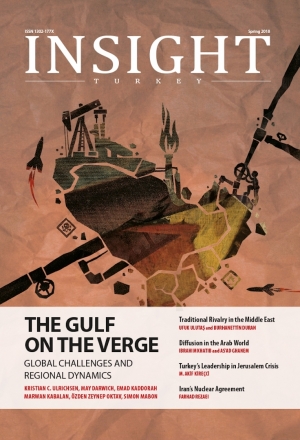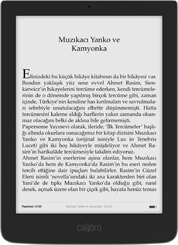The Gulf is a sub-region consisting of Saudi Arabia and five small states, namely Kuwait, Qatar, Oman, the United Arab Emirates and Bahrain. This sub-region emerged after the British recognized the independence of the above-mentioned small entities between 1961 and 1971. Having an abundant amount of natural resources, i.e. oil and natural gas, the Gulf States are among the richest countries in the world; therefore, they do not share the poverty and political instability widely found in the Middle East.
The Gulf is a sub-region consisting of Saudi Arabia and five small states, namely Kuwait, Qatar, Oman, the United Arab Emirates and Bahrain. This sub-region emerged after the British recognized the independence of the above-mentioned small entities between 1961 and 1971. Having an abundant amount of natural resources, i.e. oil and natural gas, the Gulf States are among the richest countries in the world; therefore, they do not share the poverty and political instability widely found in the Middle East.
The sub-region was institutionalized with the establishment of the Gulf Cooperation Council (GCC) in 1981 as a result of three important regional developments –the Iranian Islamic Revolution in 1979, the Soviet invasion of Afghanistan in 1979, and the outbreak of the Iran-Iraq war in 1980. The GCC was mainly designed as a security institution to counter regional threats emanating from the other side of the Persian Gulf, namely Iran. However, after the invasion of Kuwait, by Saddam’s Iraq, the Gulf States became alarmed and asked the United States to protect their political independence against all regional threats.
After the collapse of the Cold War, the Gulf States initiated a process of regional integration and significant steps were taken to achieve a monetary and economic union. At the end of the first decade of the 21st century, the Gulf States decided to introduce “al-khaleeji” as the common currency. However, this promising process was halted with the eruption of the Arab uprisings and revolutions.
The Arab uprisings have imposed the greatest threat to the unity of the Gulf. For the first time in their history, the Gulf States began to be challenged politically from not only external threats but also internal dynamics. The process of sweeping changes throughout the Middle East instigated great concern in the Gulf, the most pro-status quo states in the region. During the first two years, 2011-2013, the Gulf States tried to follow a defensive policy against the powers of change. They strived to keep the wave of uprisings away from the Gulf. After they had overcome their shock and confusion, they began to take initiatives to intervene into the regional crises.
Some of the Gulf countries, especially Saudi Arabia and the UAE, organized a military coup against the region’s first and only democratically elected government of Muhammad Morsi, placing Egypt in an economically and politically vulnerable position. Furthermore, these two countries interfered into the domestic affairs of other regional states in crisis such as Libya, Yemen and Lebanon. They succeeded in turning the “Arab Spring” into an “Arab Winter” by eliminating, de-legitimizing and weakening the carriers of reform, the Muslim Brotherhood and its affiliates, throughout the Arab world. Thus, indirectly they suppressed the moderate non-state actors in favor of radical actors and terrorist groups such as ISIS and al-Qaeda.
Saudi Arabia and the UAE went further and tried to redesign the region through their ambitious regional policies. Encouraged by the United States and Israel, they gained the support from countries that are dependent on their petro-dollars such as Bahrain, Egypt and Jordan. These two states attempted to lead both the Arab and Muslim worlds; and therefore, mobilized their only asset, billions of petro-dollars, to buy influence in the region. In order to be able to lead the Arab world, Saudi Arabia and the UAE had to delegitimize the Muslim Brotherhood and affiliated groups and political parties –the main carriers of popular demonstrations throughout the Arab world. Therefore, they declared all these political groups and social movements as “terrorist organizations.” They even attempted to ostracize those regional countries, i.e. Turkey and Qatar that support these popular movements, while at the same time forcing other countries to support their regional policies.
The first target was Qatar; the Arab state most open to liberal values and diversity. In 2014, Saudi Arabia and the UAE forced Qatar to cut its relations with regional non-state actors such as the Brotherhood and Hamas, but the Obama Administration did not allow Riyadh and Abu Dhabi to instigate a crisis. However, after Trump came to power, these two states reintroduced the crisis and imposed their blockade against Qatar. Nevertheless, with the strong support of Turkey and Iran, two significant regional powers, the policy of Saudi Arabia and the UAE has failed. As a result, Riyadh and Abu Dhabi have shattered the unity of not only the Arabs but also that of the Gulf. While Oman maintained its neutral position, by following an active neutrality policy and playing a mediating role, Kuwait tried to prevent the breakup of the Gulf region. Although it has not declared so publicly, Kuwait rejects the regional design attempts by the Saudi and Emirati governments.
To lead the Muslim world, Saudi Arabia led the foundation of the so-called “Islamic Military Alliance” comprising of more than 50 nations. However, it became clear in a short time period that this attempt was not a real Islamic alliance to bring stability to the region, but a measure to fortify a Sunni bloc against Iranian regional expansionism. That is, Saudi Arabia tried to utilize the Sunni Islamic understanding for its regional policies. It is not difficult to claim that Saudi Arabia and the UAE will not be able to realize this project. The possibility of ending up with the disillusionment of the Arab and Muslim streets and alienation of some Sunni countries is quite high. Overall the project, which has been executed with the support of the U.S. and Israel, is an attempt to deepen the sectarian strife between Shias and Sunnis and it will not bring political stability or peace to the region.
In conclusion, in order to protect themselves against regional threats and to establish a balance of power against other regional powers, the small Gulf States must form military alliances and political institutions with other regional countries. First, they need to maintain the unity of the Gulf. Second, Riyadh and Abu Dhabi should encourage other regional actors to contribute to the regional stability. Saudi Arabia and the UAE have to end the Qatari crisis, a lose-lose crisis manufactured by these two states, since it is undermining the sub-region’s security and economic outlook. Third, the Gulf States must keep the sub-region as the island of political and economic stability in the chaotic Middle East and contribute to the gradual and peaceful reconstruction of the region. To achieve this objective, the Gulf States must stop using conflicting political discourses.
Considering all these important developments, the Gulf region has attracted a lot of attention among the scholars and Insight Turkey, through this special issue, aims to cover some of the main topics such as the Qatari crisis, the rise of sectarianism, the foreign policies of the pro-status quo countries and the relations of these states with Turkey.
The situation in the Gulf region gets more complicated as time passes and the division between blocks has started to become deeper. Ufuk Ulutaş and Burhanettin Duran provide a comprehensive analysis of all of the actors, including here global and regional ones, which are currently included in the Gulf affairs. Without any doubt, the Qatari crisis has played a decisive role in manifesting the existing regional rifts. In the light of this, Kristian Coates Ulrichsen and Marwan Kabalan focus on this crisis, which started with the blockade of Qatar by the so-called Quartet, i.e. Saudi Arabia, the UAE, Bahrain and Egypt. With a special focus on the Gulf and U.S. policies respectively, both of the authors provide valuable insights regarding the crisis and the future of the Gulf.
The main division in the region comes as a result of the rise of sectarianism, which has transformed into local sectarian and regional geopolitical confrontations among some Gulf States –mainly Saudi Arabia and the UAE– and Iran. Emad Kaddorah, in his commentary, argues that the regional conflict over the Gulf region is geo-sectarian, meaning that it is a geopolitical contest, which has recently been engulfed by a sectarian dimension.
Saudi Arabia remains one of the main actors in the region and it deserves special attention. The articles of Simon Mabon and May Darwich help to better understand the domestic and foreign policies of Saudi Arabia. Mabon looks at the actions of the new crown prince to explore the impact of Bin Salman’s influence on both the Kingdom and the Middle East more broadly. On the other hand, Darwich analyzes the Saudi intervention in Yemen, a war that many have started to consider as “Saudis Vietnam war.” More specifically, May Darwich offers an alternative explanation for the abrupt Saudi aggressiveness toward Yemen and argues that this intervention is driven by the Saudi leadership aims to assert the Kingdom’s status as a regional power in the Middle East.
Despite Saudi Arabia, the UAE is another important actor in the region, whose impact is underestimated. By focusing on the military bases built by the UAE in the Horn of Africa, İsmail Numan Telci and Tuba Öztürk Horoz provide an explanation on the real motivations behind the Emirati foreign policies which have started to focus more on hard power, a deviation from the perpetual foreign policies of the other Gulf States.
Amidst the shattering order of the Gulf, Turkey has pursued a careful and balancing policy, finding itself sided neither with the Saudi-led block, nor with the Iranian-led block. At this point it is important to understand the background of the Turkey-GCC states relations and Özden Zeynep Oktav in her article brings a detailed analysis of the root causes that led to the policy divergences between Turkey, and some GCC states, i.e. Saudi Arabia and the UAE.
This special issue of Insight Turkey includes five off-topic pieces, which indeed are closely related with the Gulf affairs. In his commentary, M. Akif Kireçci, focuses on the initiatives undertaken by Turkey after Trump declared Jerusalem as the capital of Israel and how the divided Gulf States left aside their disparities to protect the rights of Palestinians against this fallacious decision. The article of Osama Anter Hamdi complements Kireçci’s commentary, as the author provides a comprehensive analysis of the American foreign policy toward the Arab-Israeli conflict since the establishment of the Israeli state.
Iran, of course, deserves special attention as the foreign policies of the Gulf States are mostly designed to balance the Iranian influence in the region. The three remaining articles of the issue deal with U.S. Iranian relations, the nuclear deal and how Iran and Turkey serve as a model of emulation for other states in the region. Written by İmran Demir, Farhad Rezaei, and Ibrahim Khatib and As’ad Ghanem, respectively, these three articles are worth reading in order to better understand the Iranian policies.
“The Gulf on the Verge: Ambitions, Crises and Shattering Order,” provides timely analyses for a region that once again has become the linchpin of global affairs. We are confident that this issue of Insight Turkey will be a great contribution to the Gulf studies.




